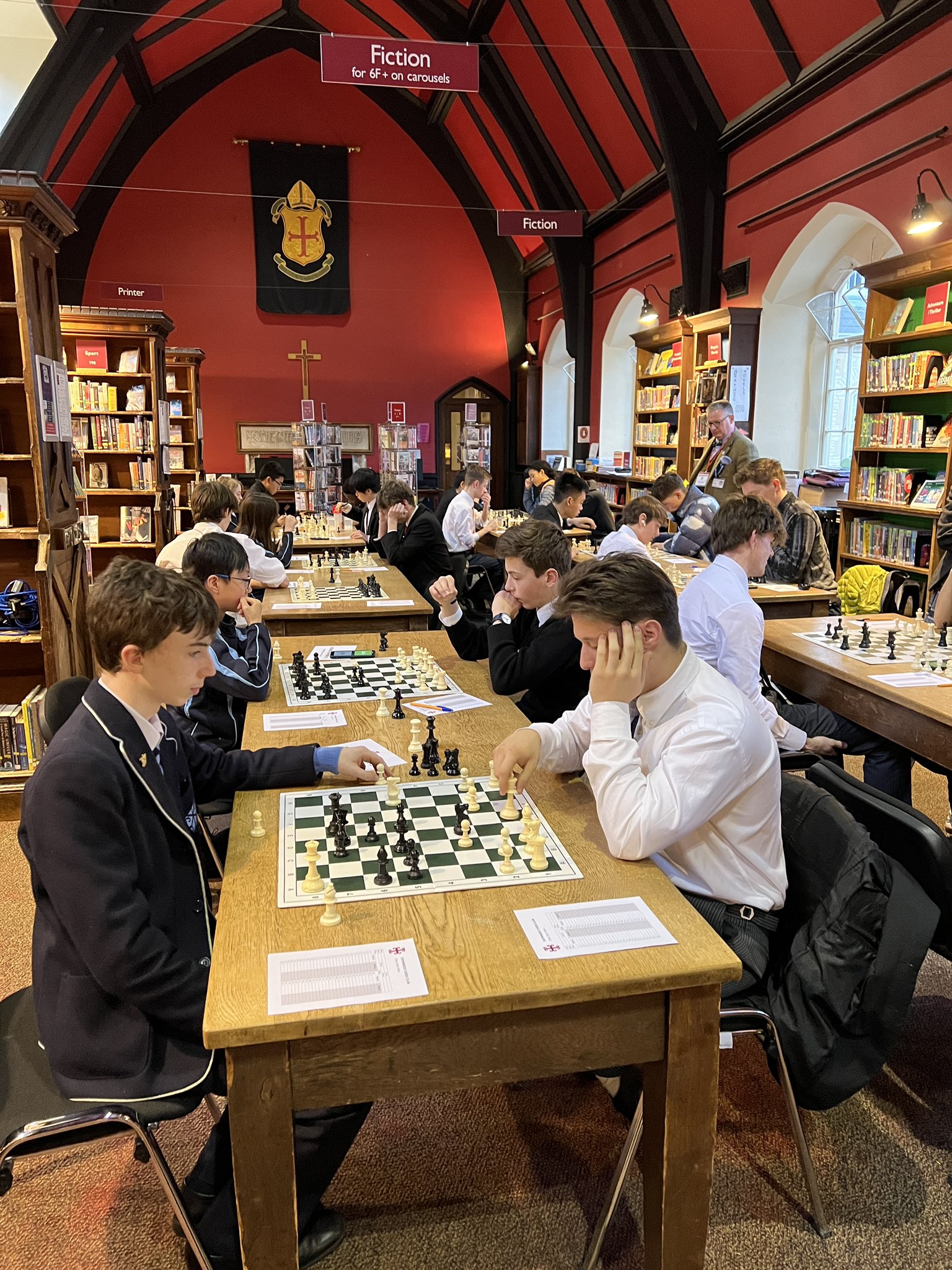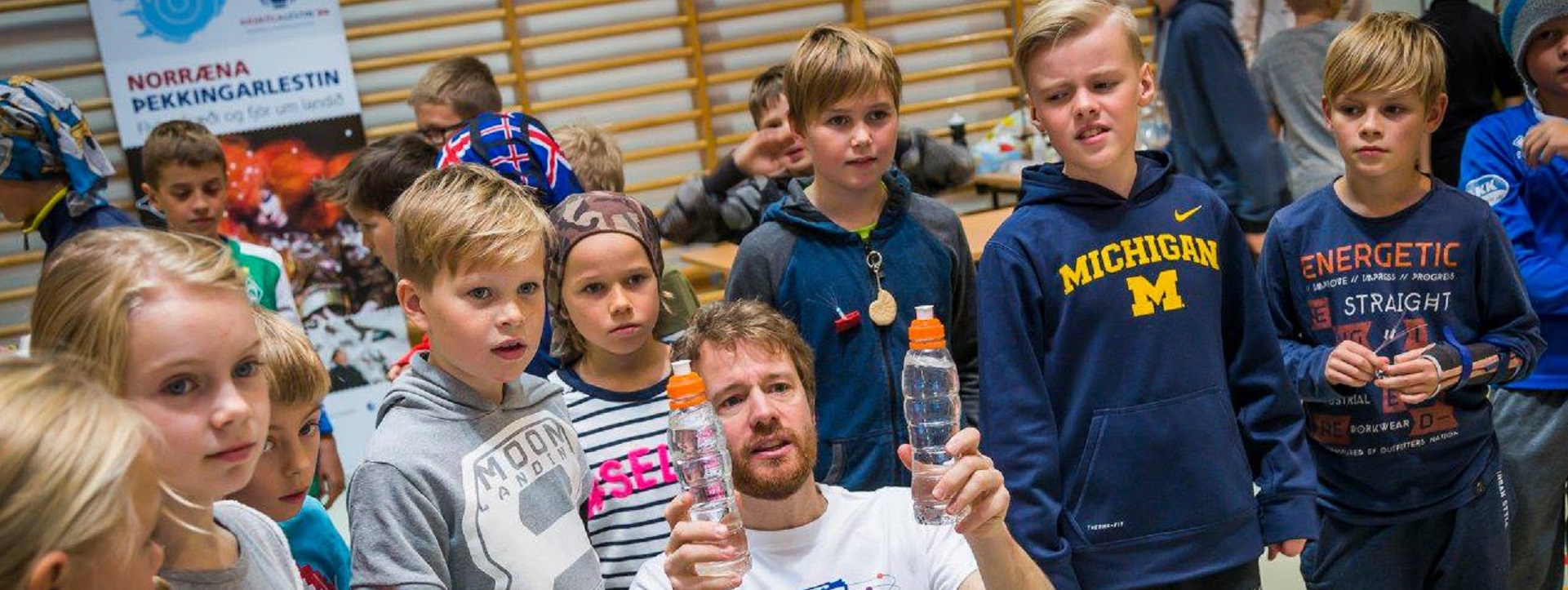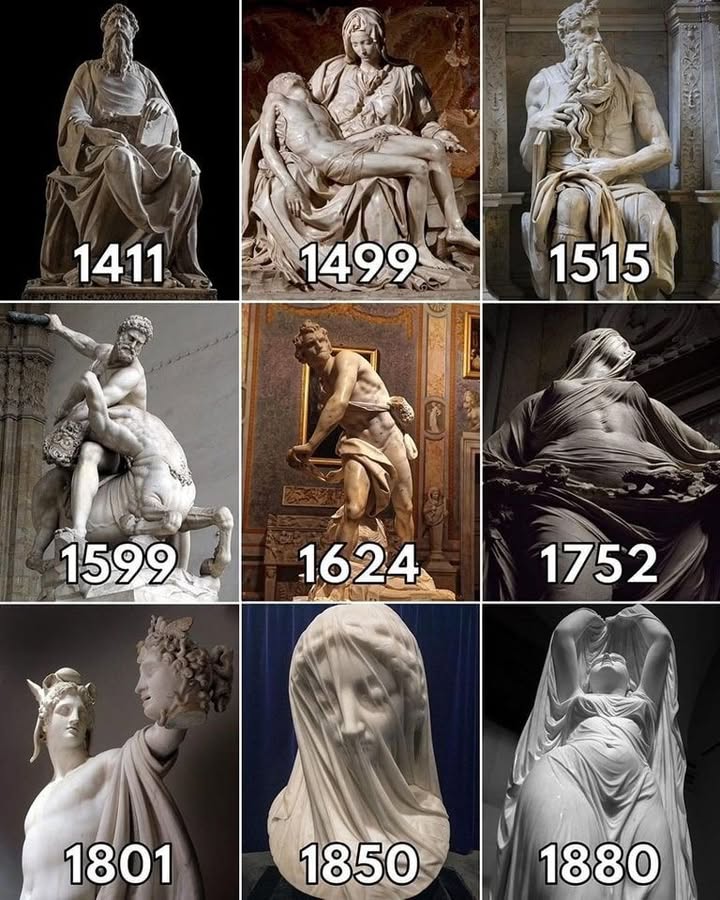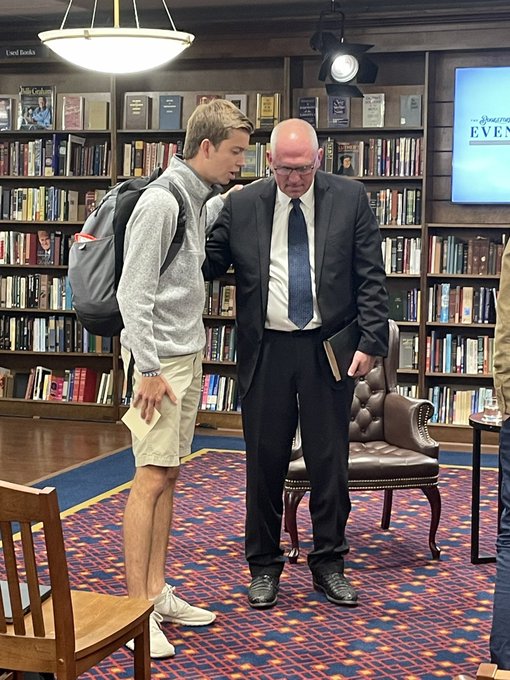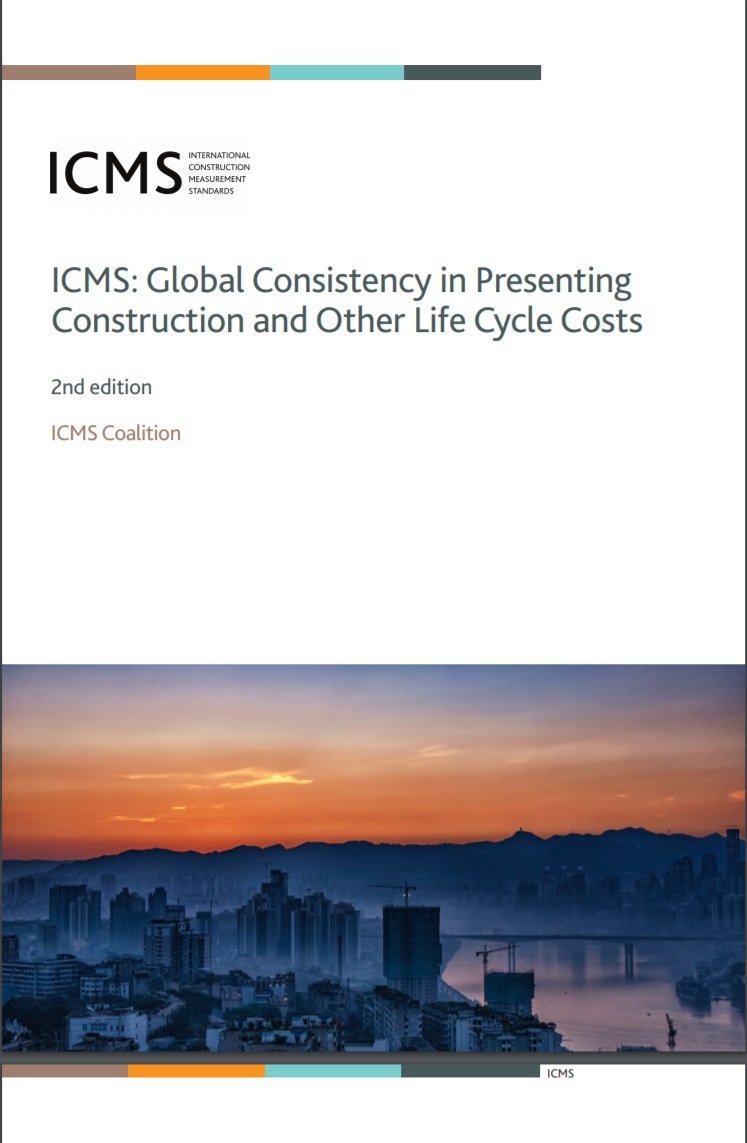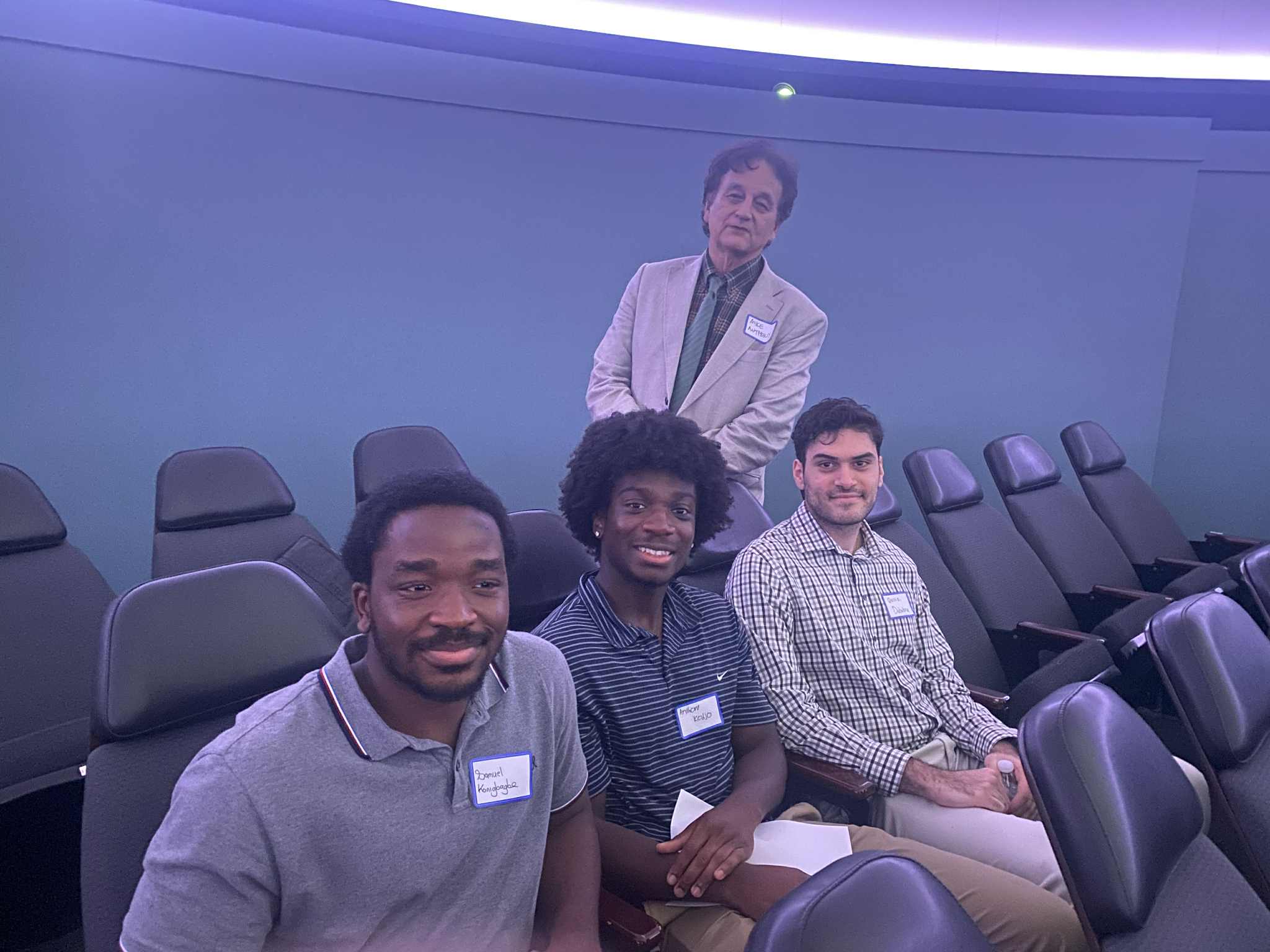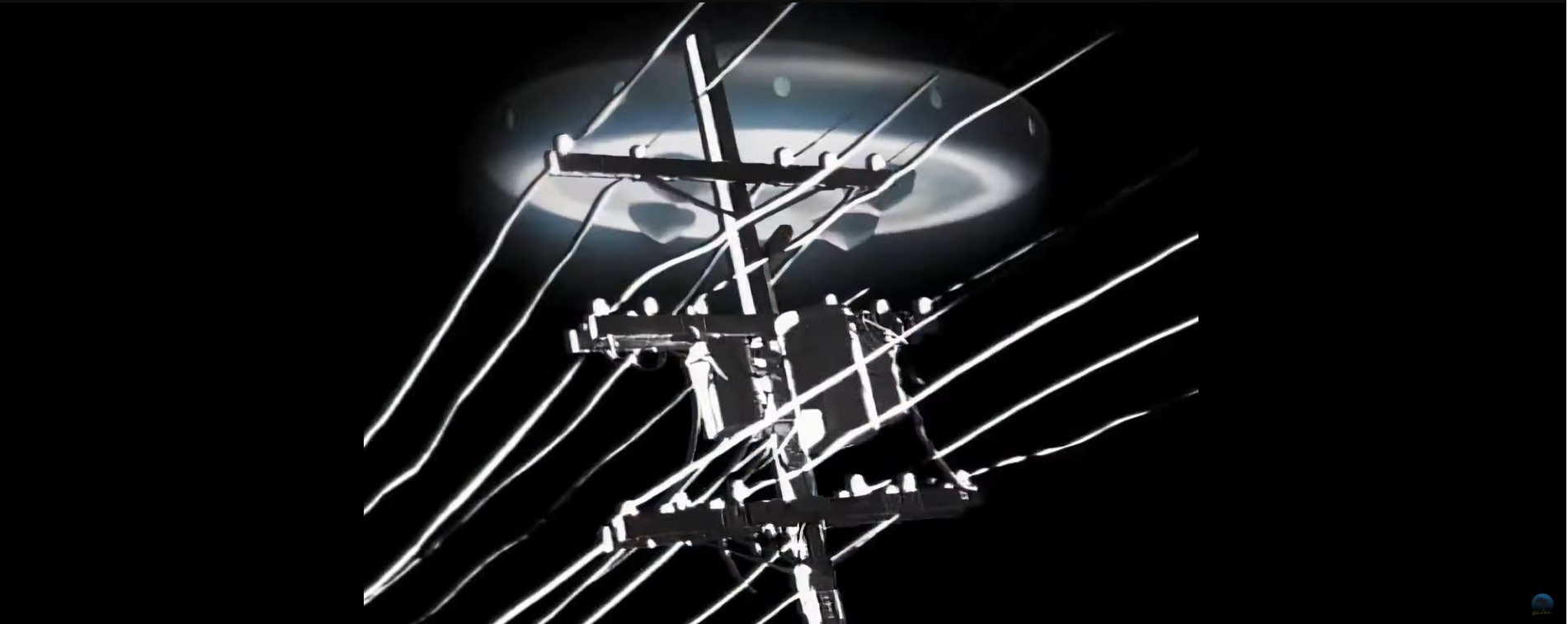Author Archives: mike@standardsmichigan.com
- Home
- Articles posted by mike@standardsmichigan.com

print (“Hello World!”)
Data Points (2023 Estimates for 193 countable nations):
Global Gross Domestic Product (GGDP) ~ $106.17T
Anglosphere (United States, United Kingdom, Canada, Australia, New Zealand) ~ $31T (or ~32% of GGDP)
United States GDP $27T (or about 1/3rd of GGDP)

“Livres des Merveilles du Monde” 1300 | Marco Polo | Bodleian Libraries, University of Oxford
Today we break down consultations on titles relevant to the technology and management of the real assets of education communities in the United States specifically; but with sensitivity to the global education markets where thousands of like-minded organizations also provide credentialing, instruction, research, a home for local fine arts and sport.
We steer away from broad policy issues and steer toward technical specifics of public consultations presented by national member bodies of the International Electrotechnical Commission, the International Organization for Standardization, the International Telecommunications Union and the American National Standards Institute. If there is a likelihood that the titles published by these workgroups will be incorporated by reference into public safety or sustainability legislation; or integrated into the cost structure of education communities in any other way, we will listen carefully and contribute meaningfully where we can.
Vienna Convention on Diplomatic Relations | 1961
| “Even apart from the instability due to speculation, there is the instability due to the characteristic of human nature that a large proportion of our positive activities depend on spontaneous optimism rather than on a mathematical expectation, whether moral or hedonistic or economic. Most, probably, of our decisions to do something positive, the full consequences of which will be drawn out over many days to come, can only be taken as the result of animal spirits — a spontaneous urge to action rather than inaction, and not as the outcome of a weighted average of quantitative benefits multiplied by quantitative probabilities. Enterprise only pretends to itself to be mainly actuated by the statements in its own prospectus, however candid and sincere that prospectus may be. Only a little more than an expedition to the South Pole is it based on an exact calculation of benefits to come. Thus if the animal spirits are dimmed and the spontaneous optimism falters, leaving us to depend on nothing but a mathematical expectation, enterprise will fade and die; — though fears of loss may have a basis no more reasonable than hopes of profit had before.”
“The General Theory of Employment, Interest, and Money” — John Maynard Keynes, 1936 |
American National Standards Institute
Setting the standard: Grange members can be voice of rural users in standardization system
ISO/IEC/ITU coordination – Listing of New Work Items (New: Passwords Required)
New ANSI Education Initiative Supports the Next Generation of Standardization Leaders
International Code Council
2024/2025/2026 ICC CODE DEVELOPMENT SCHEDULE (3/17/2023)
International Electrotechnical Commission
International Electrotechnical Commission | CDV Consultations
IEC Open Consultations: 20 December
IEC 87th General Meeting | Cairo, 22 – 26 October
Results from IEC General Assembly 2022 | San Francisco
Extended Versions Certain standards are required to be read in tandem with another standard, which is known as a reference (or parent) document. The extended version (EXV) of an IEC Standard facilitates the user to be able to consult both IEC standards simultaneously in a single, easy-to-use document.
International Telecommunications Union
The case for standardizing homomorphic encryption
Outcomes of the ITU Plenipotentiary Conference
World Radiocommunication Conference
International Standardization Organization
How ISO codes connect the world
New partnership for ISO and ICC
Must-have skills for the green economy
A partial list of projects with which we have been engaged as an active participant; starting with the original University of Michigan enterprise in the late 1990’s and related collaborations with IEEE and others: (In BOLD font we identify committees with open consultations requiring a response from US stakeholders before next month’s Hello World! colloquium)
IEC/TC 8, et al System aspects of electrical energy supply
IEC/TC 22 Power electronic systems and equipment
IEC/TC 62 Electrical equipment in medical practice
IEC/TC 64 Electrical installations and protection against electric shock
IEC/TC 82 Solar photovoltaic energy systems
IEC/SYC Electrotechnical Aspects of Smart Cities
Standards Michigan Workspace for IEC/ITU Consultations
ISO/IEC JTC 1 Information Technology, et. al
ISO/TC 205 Building environmental design
ISO/TC 229 Nanotechnologies
ISO/TC 232 Education and Learning Services
ISO/TC 260 Human Resource Management
ISO/TC 267 Facility Management
ISO/TC 268 Sustainable cities and communities
ISO/TC 301 Energy management and energy savings
ISO/TC 304 Healthcare organization management
We collaborate with the appropriate ANSI US TAG; or others elsewhere in academia. We have begun tracking ITU titles with special attention to ITU Radio Communication Sector.
main( ) { printf("hello, world\n"); }
We have collaborations with Rijksuniversiteit Groningen, Sapienza – Università di Roma, Universität Zürich, Universität Potsdam, Université de Toulouse. Universidade Federal de Itajubá, University of Windsor, the University of Alberta, to name a few — most of whom collaborate with us on electrotechnology issues. Standards Michigan and its 50-state affiliates are (obviously) domiciled in the United States. However, and for most issues, we defer to the International Standards expertise at the American National Standards Institute
ANSI INTERACTIVE MAP: INTERNATIONAL TRADE & DEVELOPMENT
Use the login credentials at the upper right of our home page.
More
Data Point: Global Construction Market is Expected to Reach $11 trillion by 2031
General Public Participation in ANSI ISO Activities
March 2021 edition of the TMB Communiqué.
ISO/IEC Directives, Part 1, Consolidated ISO Supplement
International Electrotechnical Commission Annual Report 2019
ANSI Education & Training Overview
ITU Digital Technical Standards
* A “Hello, World!” program generally is a computer program that outputs or displays the message “Hello, World!”. Such a program is very simple in most programming languages (such as Python and Javascript) and is often used to illustrate the basic syntax of a programming language. It is often the first program written by people learning to code. It can also be used as a sanity test to make sure that a computer language is correctly installed, and that the operator understands how to use it.
Children’s Rights Management
The Icelandic Standards Body has proposed a new ISO standard: Children’s rights management (Page 45). Public comment will be received until December 10th.
Icelandic Standards Children’s Rights Management Proposal
(Our response to ANSI at the bottom of this page)
December 12, 2025
Dear Madeline, Sara and Rachel:
Hope all is well.
Thank you for the opportunity to comment on this proposal. This statement is our formal recommendation that ANSI find a way for the USA to participate. If you need this recommendation on our letterhead please let me know. I am happy to discuss over the phone at your convenience, also.
The recommendations listed below are informed by University of MIchigan and Standards Michigan engagement with ANSI and ISO for the better part of twenty years*. I, personally, have met with ISO staff several times in Geneva over the past 20 years and have been graciously received. I admire their processes and integrity of purpose.
Now, after having read the Business Plan, just a few bullet points:
-
The boundaries between children’s rights and education will quickly become fuzzy. The length of the list of incumbent references in the Business Plan reveals a requirement for cross-cultural sensitivities.
-
A US TAG will need substantial funding — usually a high bar for non-profits but less so for for-profit manufacturers, insurance companies, inspection and compliance. The mortality rate of ANSI TAGs, from our point of view, seems high.
-
Viability of the project – using successful ISO work on Quality Control, for example – will have to track in regulations that fund compliance revenue. It will take decades, at best half decades, for that to happen.
Looks like a lot of meetings. We applaud Icelandic leadership.
Hope this helps // Mike
xc: Christine Fischer
* List of ISO projects The University of Michigan and Standards Michigan has been involved with since about 2010.
ISO/IEC JTC 4 Smart and sustainable cities and communities • ISO/TC 48 Laboratory equipment • ISO/TC 205 Building environment design • ISO/TC 232 Education and learning services • ISO/TC 260 Human resource management • ISO/TC 267 Facility management • ISO/TC 292 Security and resilience • ISO/TC 301 Energy management and energy savings ISO/TC 304 Healthcare organization management • ISO/TC 336 Laboratory design
• INCITS ISO/IEC/JTC electrotechnology committees
Also: See our ABOUT
Eurocodes
Erasmus+ EU programme for education, training, youth and sport
The Eurocodes are ten European standards (EN; harmonised technical rules) specifying how structural design should be conducted within the European Union. These were developed by the European Committee for Standardization upon the request of the European Commission. The purpose of the Eurocodes is to provide:
- A means to prove compliance with the requirements for mechanical strength and stability and safety in case of fire established by European Union law.[2]
- A basis for construction and engineering contract specifications.
- A framework for creating harmonized technical specifications for building products (CE mark).
Since March 2010 the Eurocodes are mandatory for the specification of European public works and are intended to become the de facto standard for the private sector. The Eurocodes therefore replace the existing national building codes published by national standard bodies, although many countries have had a period of co-existence. Additionally, each country is expected to issue a National Annex to the Eurocodes which will need referencing for a particular country (e.g. The UK National Annex). At present, take-up of Eurocodes is slow on private sector projects and existing national codes are still widely used by engineers.
Eurocodes appear routinely on the standing agendas of several of our daily colloquia, among them the AEDificare, Elevator & Lift and Hello World! colloquia. See our CALENDAR for the next online meeting; open to everyone.
So proud to announce the @ellisoninst is beginning construction on our new campus at the @UniofOxford and broadening our mission: Science & Engineering for Humanity. EIT develops & deploys technology in pursuit of solving four of humanity’s most challenging & enduring problems.… pic.twitter.com/vSkHWSS8EK
— David Agus (@DavidAgus) October 15, 2023
More
REGULATION (EU) No 305/2011 OF THE EUROPEAN PARLIAMENT AND OF THE COUNCIL
Quadrivium: Autumn
Mississippi State University Deer Lab TV
ANSI Standards Action December 12, 2025 | NFPA Standards Council Meeting December 3
Secretary Linda McMahon: Education National Emergency
Inside the tiny Highland school with just two pupils | BBC Scotland News
Intercollegiate Studies Institute: Immigration and the State of Cheating in Universities
Trending | Engagements, Weddings & Births | Sport News | Carillons
100 years ago, the Supreme Court made it clear in Pierce v. Society of Sisters: raising children is the responsibility of parents, not the government.
100 years later, the Trump Administration remains committed to protecting parental rights. pic.twitter.com/yduXdLShty
— Secretary Linda McMahon (@EDSecMcMahon) June 1, 2025
“…O chestnut tree;, great rooted blossomer,
Are you the leaf, the blossom or the bold?
O body swayed to music, O brightening glance,
How can we know the dancer from the dance?”
— Among Schoolchildren, 1933 William Butler Yeats
We sweep through the world’s three major time zones; updating our understanding of the literature at the technical foundation of education community safety and sustainability in those time zones 24 times per day. We generally eschew “over-coding” web pages to sustain speed, revision cadence and richness of content as peak priority. We do not provide a search facility because of copyrights of publishers and time sensitivity of almost everything we do.
Readings:
“The Advancement of Learning” Francis Bacon (1605)
“The Allegory of the Cave” 380 BCE | Plato’s Republic, Book VII
Thucydides: Pericles’ Funeral Oration
IEEE Access: Advanced Deep Learning Models for 6G: Overview, Opportunities, and Challenges | Xidian University
“Albion: The Origins of the English Imagination” (2002) Peter Ackroyd
“Bitcoin: A Peer-to-Peer Electronic Cash System” Satoshi Nakamoto
“Extraordinary Popular Delusions and the Madness of Crowds” (1841) | Charles Mackay
Cognitive Science: An Introduction to the Study of Mind
“Kant’s Categorical Imperative” | Hillsdale College Introduction to Western Philosophy
“The Natural History of Stupidity” (1959) Paul Tabori
“The College Idea: Andrew Delbanco” Lapham’s Quarterly
Distributed Representations of Words and Phrases and their Compositionality | Google, Inc. et, al
Our daily colloquia are typically doing sessions; with non-USA titles receiving priority until 16:00 UTC and all other titles thereafter. We assume policy objectives are established (Safer-Simpler-Lower-Cost, Longer-Lasting). Because we necessarily get into the weeds, and because much of the content is time-sensitive and copyright protected, we usually schedule a separate time slot to hammer on technical specifics so that our response to consultations are meaningful and contribute to the goals of the standards developing organization and to the goals of stewards of education community real assets — typically the largest real asset owned by any US state and about 50 percent of its annual budget.
![]()
1. Leviathan. We track noteworthy legislative proposals in the United States 118th Congress. Not many deal specifically with education community real assets since the relevant legislation is already under administrative control of various Executive Branch Departments such as the Department of Education.
We do not advocate in legislative activity at any level. We respond to public consultations but there it ends.
We track federal legislative action because it provides a stroboscopic view of the moment — the “national conversation”– in communities that are simultaneously a business and a culture. Even though more than 90 percent of such proposals are at the mercy of the party leadership the process does enlighten the strengths and weakness of a governance system run entirely through the counties on the periphery of Washington D.C. It is impossible to solve technical problems in facilities without sensitivity to the zietgeist that has accelerated in education communities everywhere.
Michigan can 100% water and feed itself. Agriculture is its second-largest industry.
2. National Institute of Standards and Technology (NIST)
3. American National Standards Institute (ANSI)
4. Fast Forward
5. Rewind
6. Corrigenda
“The world will never starve for want of wonders;
but only for want of wonder.”
Standards Australia
Department of Industry, Science and Resources
Tune in to our latest podcast ‘Building a global Quantum Industry: Explaining, Scaling and Standardising Quantum Technologies’ where experts draw upon quantum’s most exciting applications.https://t.co/dFun1MTkDE
— Standards Australia (@standardsaus) November 29, 2023
Evolution of the standards system in Australia is tracking the evolution of the United States standards system administered by the American National Standards Institute. In many economic sectors adherence to Australian Standards is mandated by legislation, however, access to the standards are often cost prohibitive, particularly to small business and sole traders.
Principal petitioner Andrew Gardso, an electrical engineer, states,
“This in essence will force small organisations and sole traders out of business or necessitate services being performed without having access to these standards.”
Access to Standards Australia Construction codes can cost more than $2673 for three years’ access to the National Construction Code set of standards. A petition to the Australian parliament’s House of Representatives seeks free or affordable access to essential standards that govern the safety and consistency of products services and systems, including design and construction.
Survey and Analysis of Current End-User Data Analytics Tool Support
Three ways Artificial Intelligence is transforming agriculture and food
*
Canadian Parliament Debate on Standards Incorporated by Reference
This week, we hosted the @IECStandards #smartcities committee in Sydney. Experts discussed smart tech and #sustainability to tackle #urbanchallenges. Discover more about our efforts to build resilient, sustainable cities: https://t.co/GOjoOBXoc9 pic.twitter.com/gvqvegx4km
— Standards Australia (@standardsaus) February 14, 2025
Global Consistency in Presenting Construction & Life Cycle Costs
Research from the World Economic Forum has shown that improvements in the design and construction process can be achieved by using international standards like ICMS to gain comparable and consistent data. ICMS provides a high-level structure and format for classifying, defining, measuring, recording, analysing and presenting construction and other life-cycle costs.
Current Issues & Recent Research
“The day science begins to study non-physical phenomena,
it will make more progress in one decade
than in all the previous centuries of existence.”
|
|
IEEE SEM Student Activity 2025
IEEE Education & Healthcare Facilities Committee December 9 Minutes
Electrical Power System Research
NFPA Electrical Standards Landing Page Ω NFPA Standards Council Ω NFPA Fire Safety Landing Page
ASHRAE Landing Page | Soon: ASTM Electrical & Telecommunication Standard Development
Draft IEEE Paper Abstracts | Mike Anthony Short Biography | Electrical Industrial Conglomerates
We examine the proposals for the 2028 National Electrical Safety Code; including our own. The 2026 National Electrical Code where sit on CMP-15 overseeing health care facility electrical issues should be released any day now. We have one proposal on the agenda of the International Code Council’s Group B Committee Action Hearings in Cleveland in October. Balloting on the next IEEE Gold Book on reliability should begin.
Policy:
OUTERNET: Crossing over data gap using cubesats
Department of Energy Portfolio Analysis & Management System
Department of Energy Building Technologies Office
FERC Open Meetings | (Note that these ~60 minute sessions meet Sunshine Act requirements. Our interest lies one or two levels deeper into the technicals underlying the administrivia)
| Federal Energy Regulatory Commission | Federal Communication Commission | Michigan Public Service Commission |
| August 7 Open Meeting | ||
| July 24 Open Meeting | July 25 Open Meeting | |
| June 16 Open Meeting | January 22: Newly Appointed FCC Chairman Announces Staff Changes | June 12 Open Meeting |
| May 15 Open Meeting | May 15 Open Meeting | |
| April 17 Open Meeting | April 24 Open Meeting | |
| March 20 Open Meeting | ||
| February 20 FERC Open Meeting | March 3 Open Meeting | |
| January 16 FERC Press Conference | February 27, 2025 Open Meeting | |
January 23: NARUC Congratulates New FERC, FCC and NRC Chairs
January 22: Newly Appointed FCC Chairman Announces Staff Changes | Related: Falsus in uno, Falsus in omnibus
January 6: City of Ann Arbor Postpones Phase II Study to Municipalize DTE Energy distribution grid
January 27, 10 AM Low-Income Energy Policy Board Meeting: Michigan Public Service commission
Federal Energy Regulatory Commission: January 16, 2025 Open Meeting
Federal Energy Regulatory Commission Notice of Request for Comments (Posted November 25, 2024)
Federal Energy Regulatory Commission | November 21, Open Meeting
Michigan Public Service Commission Meetings
Michigan Public Commission Meeting February 27, 2025
MPSC DTE CMS Electric Power Reliability Case No. U-21305
Michigan Electrical Administrative Board Meeting February 13, 2025
FCC Open Meeting | November 21
Technical: (Also Electrical Power System Research)
Empower Pre-Trained Large Language Models for Building-Level Load Forecasting
Uptime Institute (via NEXT DC) : AI Inference in the Data Center
Majorana Nanowires for Topological Quantum Computing
Linearized Data Center Workload and Cooling Management
Oxford Researchers Discovered How to Use AI To Learn Like A Genius
Lex Fridman: DeepSeek, China, OpenAI, NVIDIA, xAI, TSMC, Stargate, and AI Megaclusters
IEEE: Experts Weigh in on $500B Stargate Project for AI
IEEE: AI Mistakes Are Very Different Than Human Mistakes . We need new security systems designed to deal with their weirdness
High-Performance Tensor Learning Primitives Using GPU Tensor Cores
Department of Electrical Engineering, Columbia University, New York
Department of Electrical Engineering, National Taiwan University of Science and Technology, Taipei City, Taiwan
First Draft Proposals contain most of our proposals — and most new (original) content. We will keep the transcripts linked below but will migrate them to a new page starting 2025:
2026 NEC Standards Michigan proposals | Public Input Report CMP-1
2026 NEC Standards Michigan proposals | Public Input Report CMP-2
2026 NEC Standards Michigan proposals | Public Input Report CMP-4
2026 NEC Standards Michigan proposals | Public Input Report CMP-5
2026 NEC Standards Michigan proposals | Public Input Report CMP-10
2026 NEC Standards Michigan proposals | Public Input Report CMP-11
2026 NEC Standards Michigan proposals | Public Input Report CMP-12
2026 NEC Standards Michigan proposals | Public Input Report CMP-13
2026 NEC Standards Michigan proposals | Public Input Report CMP-15
2026 NEC Standards Michigan proposals | Public Input Report CMP-16
2026 NEC Standards Michigan proposals | Public Input Report CMP-18
Related:
N.B. We are in the process of migrating electric power system research to the Institute of Electrical and Electronics Engineers bibliographic format.
Recap of the May meetings of the Industrial & Commercial Power Systems Conference in Las Vegas. The conference ended the day before the beginning of the 3-day Memorial Day weekend in the United States so we’re pressed for time; given all that happened.
We can use our last meeting’s agenda to refresh the status of the issues.
IEEE E&H Draft Agenda 28 May 2024
On site conference agenda:
IEEE E&H Conference Agenda 21 May 2024
We typically break down our discussion into the topics listed below:
Codes & Standards:
While IAS/I&CPS has directed votes on the NEC; Mike is the only I&CPS member who is actually submitting proposals and responses to codes and standards developers to the more dominant SDO’s — International Code Council, ASHRAE International, UL, ASTM International, IEC & ISO. Mike maintains his offer to train the next generation of “code writers and vote getters”
Performance-based building premises feeder design has been proposed for the better part of ten NEC revision cycles. The objective of these proposals is to reduce material, labor and energy waste owed to the branch and feeder sizing rules that are prescriptive in Articles 210-235. Our work in service and lighting branch circuit design has been largely successful. A great deal of building interior power chain involves feeders — the network upstream from branch circuit panels but down stream from building service panel.
Our history of advocating for developing this approach, inspired by the NFPA 101 Guide to Alternative Approaches to Life Safety, and recounted in recent proposals for installing performance-based electrical feeder design into the International Building Code, appears in the link below:
Access to this draft paper for presentation at any conference that will receive it — NFPA, ICC or IEEE (or even ASHRAE) will be available for review at the link below:
Toward Performance-Based Building Premise Feeder Design
NFPA 110 Definitions of Public Utility v. Merchant Utility
NFPA 72 “Definition of Dormitory Suite” and related proposals
Buildings:
Renovation economics, Smart contracts in electrical construction. UMich leadership in aluminum wiring statements in the NEC should be used to reduce wiring costs.
Copper can’t be mined fast enough to electrify the United States
Daleep asked Mike to do a Case Study session on the NEC lighting power density change (NEC 220-14) for the IAS Annual Meeting in October. Mike agreed.
Exterior Campus & Distribution:
Illumination. Gary Fox reported that IEEE 3001.9 was endorsed as an ANSI accredited standard for illumination systems.
2024-ICPSD24-0012 PERMANENT DESIGN OF POWER SYSTEMS Parise
This paper details primary considerations in estimating the life cycle of a campus medium voltage distribution grid. Some colleges and universities are selling their entire power grid to private companies. Mike has been following these transactions but cannot do it alone.
Variable Architecture Multi-Island Microgrids
District energy:
Generator stator winding failures and implications upon insurance premiums. David Shipp and Sergio Panetta. Mike suggests more coverage of retro-fit and lapsed life cycle technicals for insurance companies setting premiums.
Reliability:
Bob Arno’s leadership in updating the Gold Book.
Mike will expand the sample set in Table 10-35, page 293 from the <75 data points in the 1975 survey to >1000 data points. Bob will set up meeting with Peyton at US Army Corps of Engineers.
Reliability of merchant utility distribution systems remains pretty much a local matter. The 2023 Edition of the NESC shows modest improvement in the vocabulary of reliability concepts. For the 2028 Edition Mike submitted several proposals to at least reference IEEE titles in the distribution reliability domain. It seems odd (at least to Mike) that the NESC committees do not even reference IEEE technical literature such as Bob’s Gold Book which has been active for decades. Mike will continue to propose changes in other standards catalogs — such as ASTM, ASHRAE and ICC — which may be more responsive to best practice assertions. Ultimately, improvements will require state public utility commission regulations — and we support increases in tariffs so that utilities can afford these improvements.
Mike needs help from IEEE Piscataway on standard WordPress theme limitations for the data collection platform.
Mike will update the campus power outage database.
Healthcare:
Giuseppe Parise’s recent work in Italian power grid to its hospitals, given its elevated earthquake risk. Mike’s review of Giuseppe’s paper:
Harvard Business School: Journal of Healthcare Management Standards
Mike and David Shipp will prepare a position paper for the Harvard Healthcare Management Journal on reliability advantages of impedance grounding for the larger systems.
The Internet of Bodies
Forensics:
Giuseppe’s session was noteworthy for illuminating the similarity and differences between the Italian and US legal system in handling electrotechnology issues.
Mike will restock the committee’s library of lawsuits transactions.
Ports:
Giuseppe updates on the energy and security issues of international ports. Mike limits his time in this committee even though the State of Michigan has the most fresh water international ports in the world.
A PROPOSED GUIDE FOR THE ENERGY PLAN AND ELECTRICAL INFRASTRUCTURE OF A PORT
Other:
Proposals to the 2028 National Electrical Safety Code: Accepted Best Practice, exterior switchgear guarding, scope expansion into ICC and ASHRAE catalog,
Apparently both the Dot Standards and the Color Books will continue parallel development. Only the Gold Book is being updated; led by Bob Arno. Mike admitted confusion but reminded everyone that any references to IEEE best practice literature in the NFPA catalog, was installed Mike himself (who would like some backup help)
Papers in Process:
Impedance Grounding Papers 1 and 2 with David Shipp. Previous Discussion:
https://ieeetv.ieee.org/channels/ieee-region-events/uc-berkeley-s-medium-voltage-grounding-system
Over Coffee and Beers:
Mike assured Christel Hunter (General Cable) that his proposals for reducing the 180 VA per-outlet requirements, and the performance-base design allowance for building interior feeders do not violate the results of the Neher-McGrath calculation used for conductor sizing. All insulation and conducting material thermal limits are unaffected.
Other informal discussions centered on the rising cost of copper wiring and the implications for the global electrotechnical transformation involving the build out of quantum computing and autonomous vehicles. Few expressed optimism that government ambitions for the same could be met in any practical way.
Are students avoiding use of Chat GPT for energy conservation reasons? Mike will be breaking out this topic for a dedicated standards inquiry session:
Workspace IEEE 1366: Guide for Electric Power Distribution Reliability Indices
Largest U.S. Electric Utility Companies Ranked by Generation Capacity For IEEE 493 update we seek outage data from the 100 largest campus power system experts.
Smart Cities: Wicked Problems
Smart cities: moving beyond urban cybernetics to tackle wicked problems
Cambridge Journal of Regions, Economy and Society, Volume 8, Issue 1, March 2015 | “The Smart City”
Abstract. This article makes three related arguments. First, that although many definitions of the smart city have been proposed, corporate promoters say a smart city uses information technology to pursue efficient systems through real-time monitoring and control. Second, this definition is not new and equivalent to the idea of urban cybernetics debated in the 1970s. Third, drawing on a discussion of Rio de Janeiro’s Operations Center, I argue that viewing urban problems as wicked problems allows for more fundamental solutions than urban cybernetics, but requires local innovation and stakeholder participation. Therefore the last section describes institutions for municipal innovation and IT-enabled collaborative planning.
So proud to announce the @ellisoninst is beginning construction on our new campus at the @UniofOxford and broadening our mission: Science & Engineering for Humanity. EIT develops & deploys technology in pursuit of solving four of humanity’s most challenging & enduring problems.… pic.twitter.com/vSkHWSS8EK
— David Agus (@DavidAgus) October 15, 2023
New update alert! The 2022 update to the Trademark Assignment Dataset is now available online. Find 1.29 million trademark assignments, involving 2.28 million unique trademark properties issued by the USPTO between March 1952 and January 2023: https://t.co/njrDAbSpwB pic.twitter.com/GkAXrHoQ9T
— USPTO (@uspto) July 13, 2023
Standards Michigan Group, LLC
2723 South State Street | Suite 150
Ann Arbor, MI 48104 USA
888-746-3670



